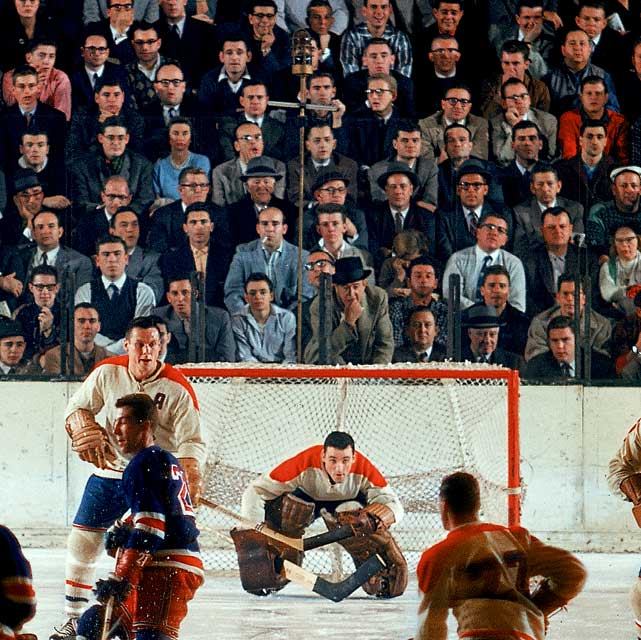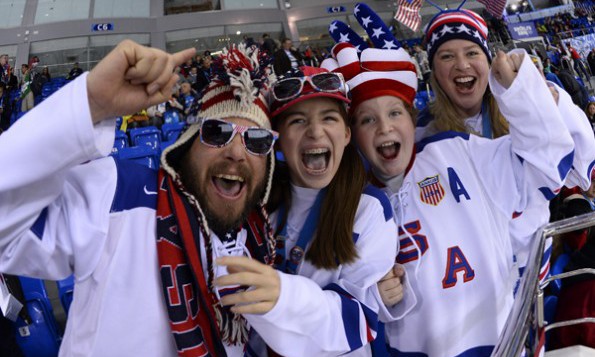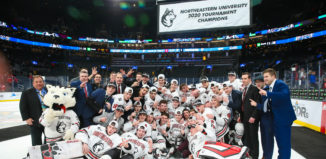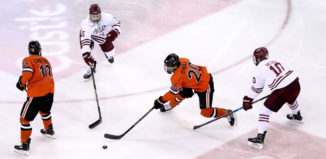Evolution of Hockey Fans
(Source: http://www.refinedguy.com)
The game of hockey has changed in almost every aspect over the decades: from rules and equipment to techniques and strategies. Not only has the game evolved, but the fandom has transformed as well. Today, many fans may not even think about what the early fans’ customs and traditions were, but in this article we will take a look at the early hockey fans and compare them to today’s fans.
Today, hockey attracts many more fans than it did when things were first getting started. However, when the game was first getting started, a larger majority of the fans’ reason for attending was because they had high interest in the game and actually understood most of its concepts. Today, in a world where marketing has seemed to take over our world, the teams offer special prices and add various gimmicks to attract even more fans. With this in mind, there is now a higher percentage of fans who attend the game simply for the experience.
A larger percentage of the fans today come for reasons such as simply being able to say they attended a hockey game, because there was a special promotion, because their work or some other organization gave them tickets, or just because they needed some fun activity for a family outing. This causes the hockey organizations to employ other entertainment devices throughout the game for fans who don’t really know what is going on. They play comical videos on the big screen, offer the fans noisemakers and other toys with the team logos, and give them a variety of snacks to munch on.
Fans have even found other ways to entertain themselves while the game goes on. They try to start a wave, make funny posters, wait for cameras to make funny faces or show off dance moves, or they try to join the fans who know what’s going on and criticize the calls and copy what others are yelling. Some knowledgeable fans may find these activities annoying as they just want to watch the game. I used to sit near a guy who used to yell, “There’s no wave in hockey!” It’s definitely difficult to watch the game when someone keeps standing up in front of you.
I have personally been on both sides. I started going to games when I was eight and used to love all the gimmicks and barely ever paid attention to the game. After a few years passed and I learned more about the game though, I cared less and less about the gimmicks and just wanted to get back to the game. Nevertheless, all types of fans continue to come to games today and although some of today’s fans’ traditions may get annoying, they still adds to the teams’ support groups and help lead our favorite teams to victory. After all, the fans really are the teams’ 7th man and are responsible for energizing the team and keeping their hopes up. Early hockey may have had a larger majority of true fans, but it’s always nice to see growing interest in the game, even if some may not fully understand what is going on.
 (Source: http://i.cdn.turner.com)
(Source: http://i.cdn.turner.com)
Not only has the fans’ behavior changed, but their attire has altered over the years as well. In the early days of professional hockey, the players dressed up less and the fans dressed up more. While the players weren’t wearing helmets, fancy padding, and uniforms professionals have today, the fans were dressing in nice hats, and their Sunday best. Nowadays, the fashion has reversed. The players now wear top of the line equipment, while the fans typically dress in a pair of jeans and a t-shirt. Today’s trend seems to be dressing as colorful and crazy as possible by painting your face, wearing wigs or crazy outfits and often sporting the same color as your team.
In the earlier days of hockey, going to a game was an event where you dressed in your best, and acted with more class than today’s fans. In these days it was common to wear a nice hat like a fedora. Around the 1950’s, fans even began participating in the tradition of the hat trick. If a player scored three goals during one game, fans gave up their hat to honor the player by tossing it onto the ice. You can imagine the difference of seeing a bunch of fedoras and fancier hats on the ice rather than tons of baseball caps. You can also imagine that the fans yelled a lot less and when they did they did not use as much foul language.
Hockey fans have changed a lot over the years in many ways, ranging from attendance, to behavior, to fashion. However, there is one aspect that has always been the same: fans come to enjoy a great game of hockey, spend time with good friends and support their favorite team. The fans may all have different stories and come from different walks of life, but during the game they are bonded by a single goal: to cheer the team on to victory . . . well . . . unless they’re rooting for the other team.















I took a sports business class last semester and we talked at length about the new gimmicky marketing. The sport, in our case: hockey, is called the core product, while all the other fluff is called product extensions. Everything that isn’t confined in the actual play of the hockey game is a product extension: giveaways, pre- post- and mid-game entertainment, concessions… As for me, I’m definitely there for the hockey! Too much blabbing from the in-arena host seriously gets on my nerves and I can’t stand the dance and kiss cams. And my home team doesn’t have funny enough videos to spark my interest in that either.
On the flip side, when I go to a sporting event that isn’t hockey, I might be more interested in that type of stuff because I’m a much less serious fan when hockey isn’t involved. So it’s a great strategy to use these marketing ploys to entice the casual fans.
Come for the bobblehead, stay for the most thrilling 60+ minutes you could possibly imagine.